Presently, state-of-the-art reporting and analytics solutions deliver reports and information based on complicated data extraction, transformation and aggregation processes. More rudimentary reporting involves manual data collection, aggregation, and subsequent analysis. Neither method offers inherent real-time capability because the information is collected and delivered after the time has passed when a change could have been implemented to affect the end result.
The ability to view information about overall equipment efficiency (OEE), cycle times, flow factor, statistical process control metrics, and other key metrics in real time enables:
- Live visibility of actual production results versus target KPIs
- Well-informed development of solutions to correct issues as they arise
- Confirmation that issue-resolution efforts are effective
- Quick identification and response to potentially out-of-control processes
Standard reporting and analytics solutions are commonly provided in conjunction with historical data available through an existing manufacturing execution system. If the needs of your manufacturing environment demand more advanced capabilities, it may be possible to extend the reporting features of your existing system or enable SYSTEMA’s Holistic Information Model (HIM) for real-time data and complex analytics capabilities to quickly detect problems, inform the development of solutions, and verify the solution actually solved the problem.
Enabling Reporting Capabilities
As with all other digital transformation strategies, the achievement of high-quality reporting and analytics capabilities is dependent upon well-integrated technology layers, including:
- Enterprise resource planning (ERP) system
- Manufacturing execution system (MES)
- Digital backbone for handling communication and interaction between all information systems
- Equipment integration and automation
- Automated WIP management
- Automated data collection, streaming, and warehousing
Core Aspects
Generally, reporting and analytics topics can be categorized into 3 distinct areas:
- Foundational manufacturing reports
- Advanced manufacturing analytics
- Future reporting capabilities
The following offers a high-level discussion of each of these areas and provides examples of the types of information that can be derived. Keep in mind that these examples are intended to provide a very small sampling and are not a comprehensive representation of what is available or possible.
Foundational Manufacturing Reports
Reporting is vital to manufacturing personnel who share a vested interest in optimizing daily production activities and ensuring that production results are on track with daily, weekly, monthly, and/or annual targets. Foundational manufacturing reports typically include a set of predefined dashboards that provide real-time updates as events occur in the factory along with the option to create custom reports and dashboards based on historical lot, equipment, and process-related data.
Some example reports and dashboards include:
Current Equipment States
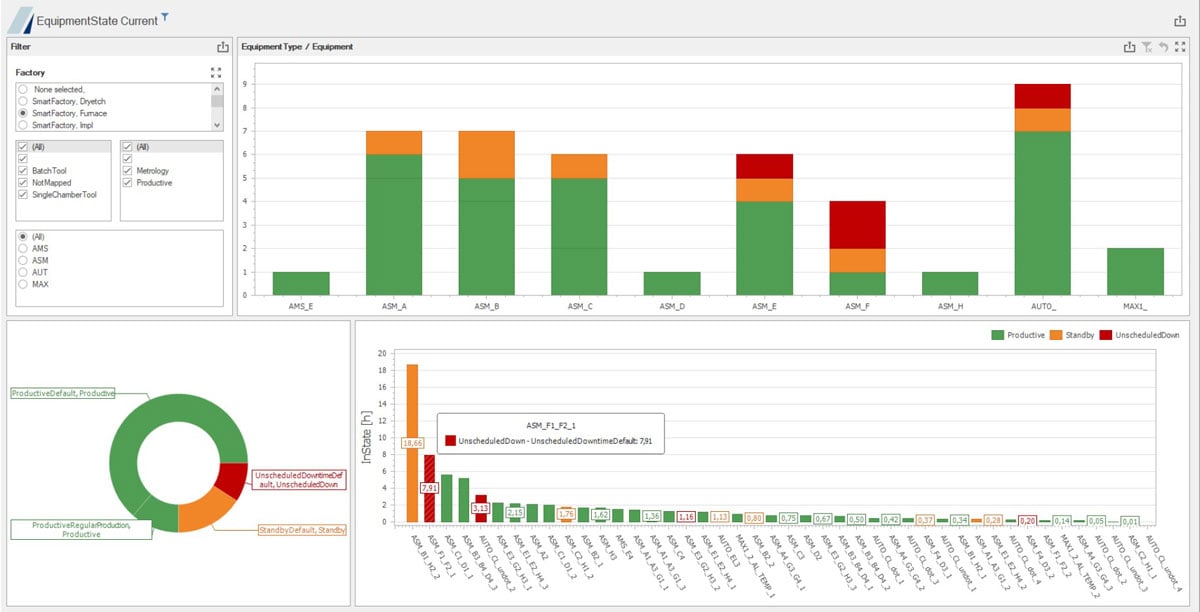
The Current Equipment States report provides information in real-time on the status of equipment. Additional capabilities not shown include reports for equipment transaction history, equipment state history, equipment state timelines, and equipment chamber state reporting.
Overall Equipment Effectiveness
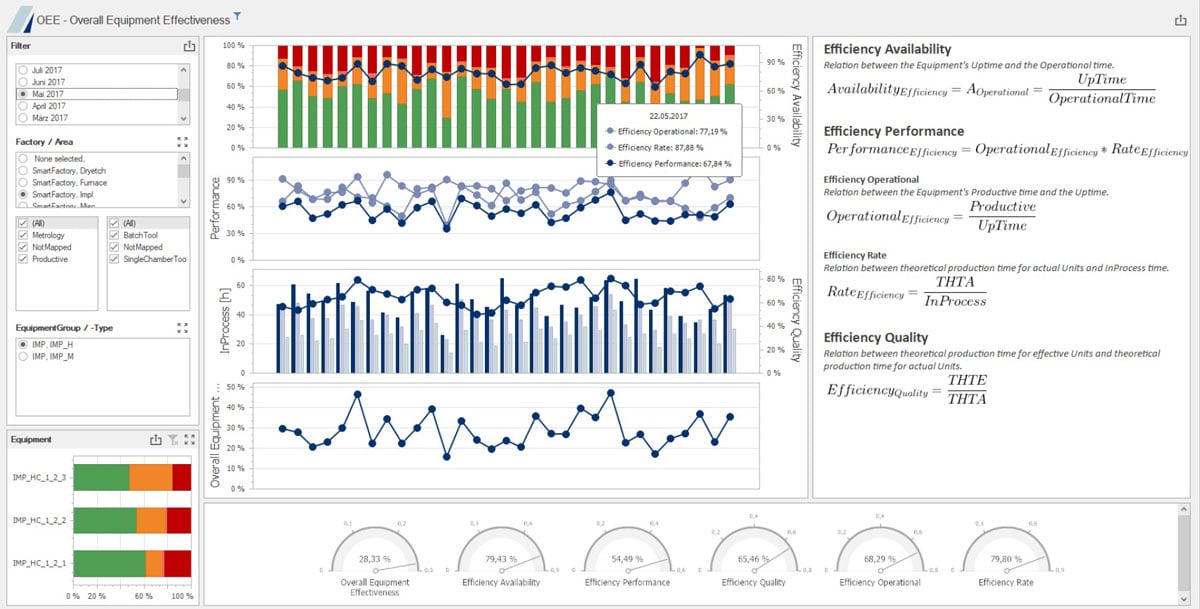
An example of Overall Equipment Effectiveness (OEE) by equipment type.
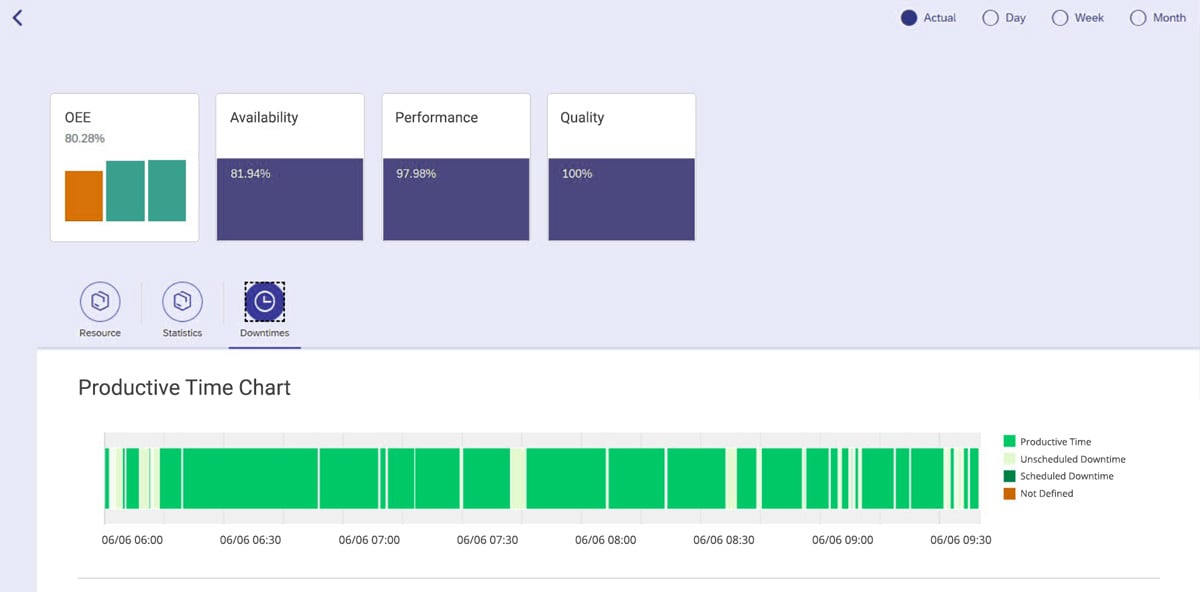
An example of Overall Equipment Effectiveness (OEE) by time period.
Cycle Time Reporting
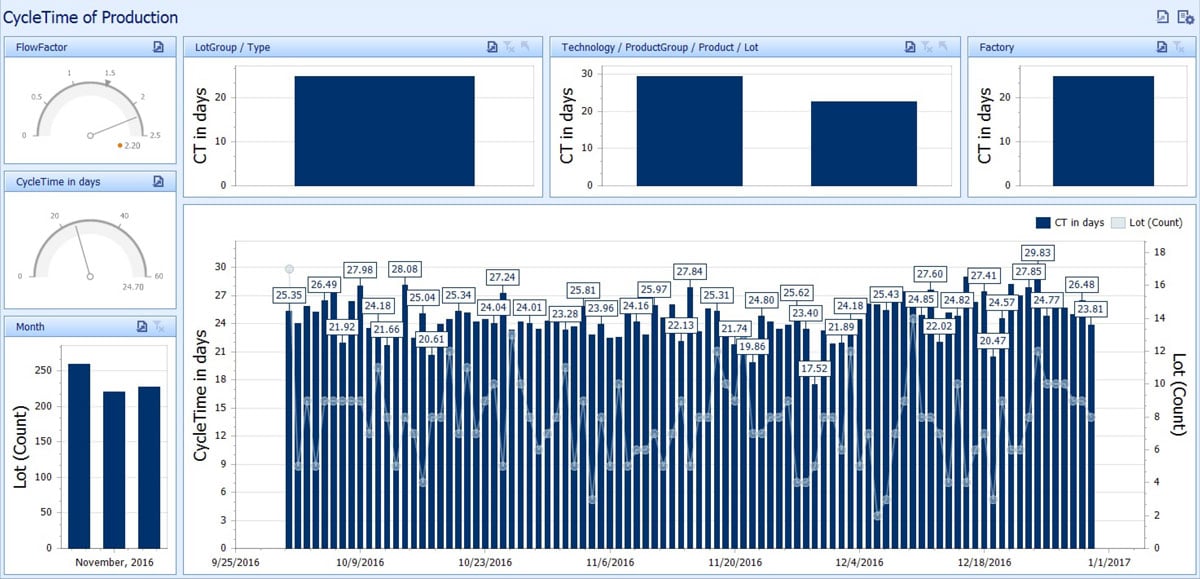
The Cycle Time report indicates the time it takes to create a production unit from the time the production order is executed through to the time the order is complete.
Finished Operations Report
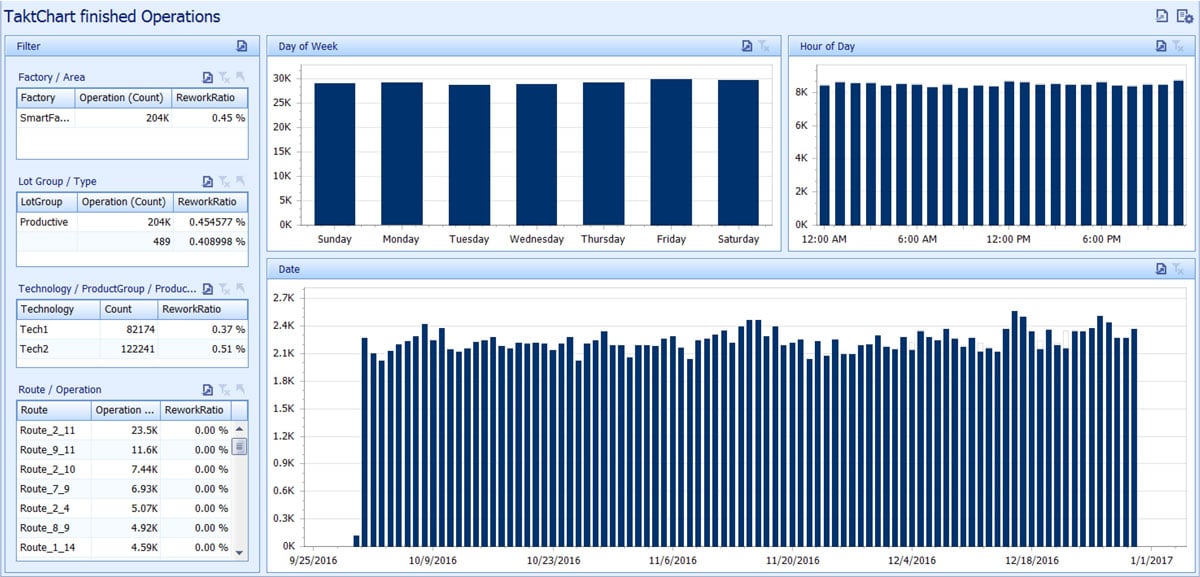
The Finished Operations report visualizes a result summary of completed operations over a given period of time. The bar charts at the top allow further filtering of the chart at the bottom of the page. For example, the dashboard can display results of completed operations on all Saturdays over a selected date range. Drilling down within the report results in summary calculations on the left side of the dashboard.
Advanced Analytics
Advanced reporting and analytics capabilities provide vital insights to engineers for purposes such as analysis of factors influencing metrics like cycle time, yield and throughput; root cause analyses; and optimization of production processes. Advanced reporting capabilities include the possibility for creating custom dashboards and ad-hoc reports to gain insights by accessing all current and historical database values for analysis. Some examples include:
Factory Simulations
Leverage a simulated environment to model, test, and optimize factory conditions related to equipment, personnel, and materials.
Root Cause Analysis
Identify factors which are contributing to sub-optimal production performance metrics related to quality, yield, etc.
Cycle time deviation reporting
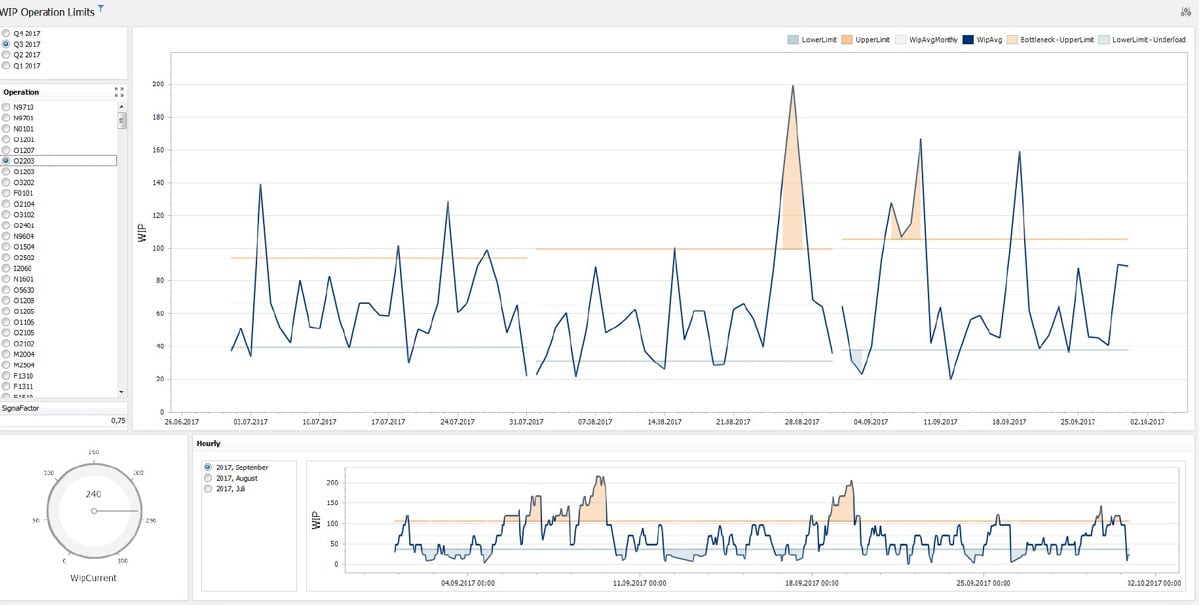
An example dashboard display to view lot cycle times and deviations in real-time to quickly detect deviations. The data used to generate this dashboard also enables reports on the real-time status of work-in-progress (WIP). Reporting capabilities with real-time WIP data include lot hold status, lots queued at equipment, lot transaction history, and lot state history.
The Future of Reporting & Analytics
Current research and development efforts center around leveraging large amounts of real-time data in conjunction with deep learning methodologies to enable technology capable of things like dynamic production forecasting, predictive maintenance, and causality analysis. Current research:
Production Forecasting
Accurately forecast and detect potential WIP discontinuities (bottlenecks, idle equipment, and impact of scheduled or unscheduled equipment downtime) in real-time with dynamic forecast calculations which are made and returned to the factory for visualization.
Typical applications for such forecast calculations include:
- Evaluation of the effects of short-term changes (for example, evaluations of changes after an unscheduled breakdown of equipment)
- Prediction of dynamic WIP waves over time, either from operation to operation or equipment to equipment
- Determination of optimal scheduling of maintenance cycles
- Prediction of bottlenecks and idle or waiting periods
This work is currently the subject of a research project with the objective to increase forecast accuracy, and finally to produce commercial-ready software solutions for factory control in the near future.
Advanced Reporting & Analytics
While this discussion has been focused around basic reporting needs such as accurate measuring of factory, equipment, and lot KPIs, it is possible to achieve continuous visualization of this information in real-time to detect positive and negative trends. Advanced manufacturing analytics can provide insights to drive optimizations based on dynamic production forecasting, predictive maintenance capabilities, and dynamic bottleneck prevention. This takes operational reporting to the next level by leveraging big data, distributed computing, statistics and machine learning to offer manufacturers a significant competitive advantage.
